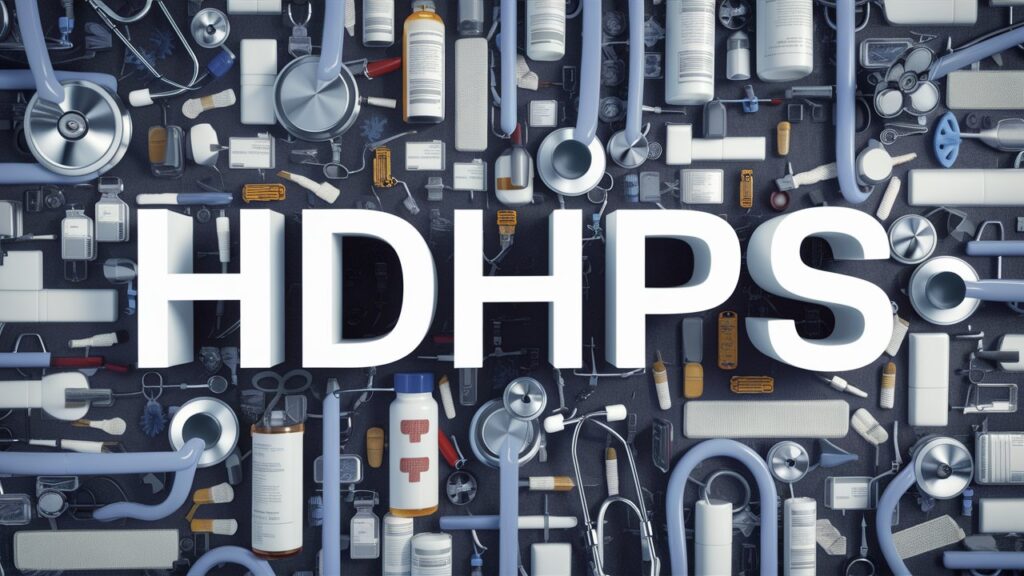High-Deductible Health Plans (HDHPs) offer a unique approach to health insurance, featuring lower premiums and higher deductibles. Ideal for those with minimal healthcare needs, HDHPs encourage proactive health management and are often paired with Health Savings Accounts (HSAs) for additional savings.
Introduction
High-Deductible Health Plans (HDHPs) have become increasingly popular in the landscape of health insurance. These plans are characterized by higher deductibles and lower premiums compared to traditional health insurance plans. HDHPs are designed to encourage individuals to make more informed and cost-effective decisions regarding their healthcare. This blog post aims to provide a comprehensive guide to HDHPs, exploring their benefits, drawbacks, eligibility criteria, and how they integrate with Health Savings Accounts (HSAs).
Understanding High-Deductible Health Plans (HDHPs)
HDHPs are a type of health insurance plan that requires the policyholder to pay a higher amount out-of-pocket before the insurance company begins to cover medical expenses. These plans typically have lower monthly premiums, making them attractive to those who do not anticipate needing frequent medical care.
Key Features of HDHPs
- High Deductibles
The defining characteristic of HDHPs is their high deductibles. As of 2024, the minimum deductible for an HDHP is $1,600 for an individual and $3,200 for a family.
- Lower Premiums
HDHPs generally have lower monthly premiums compared to traditional health insurance plans. This makes them more affordable in terms of regular payments.

- Out-of-Pocket Maximums
These plans have a limit on the amount a policyholder has to pay out-of-pocket. For 2024, the maximum is $8,050 for an individual and $16,100 for a family.
- Preventive Care Coverage
Many HDHPs cover preventive care services, such as vaccinations and screenings, without requiring the deductible to be met.
Benefits of HDHPs
HDHPs offer several advantages that make them an appealing option for many individuals and families.
Cost Savings
- Lower Premiums
The primary benefit of HDHPs is their lower premiums. This can lead to significant savings for policyholders, especially those who do not require frequent medical attention.
- Tax Benefits
When paired with an HSA, HDHPs offer tax advantages. Contributions to an HSA are tax-deductible, and withdrawals for qualified medical expenses are tax-free.
- Preventive Care
HDHPs often cover preventive care services at no cost to the policyholder, promoting early detection and prevention of illnesses.
Empowerment and Flexibility
- Consumer Empowerment
HDHPs encourage individuals to become more involved in their healthcare decisions. By having to meet a higher deductible, policyholders are more likely to shop around for the best prices and services.

- Health Savings Accounts (HSAs)
HDHPs are typically paired with HSAs, which allow individuals to save money tax-free for medical expenses. HSAs can be used to cover deductibles, copayments, and other out-of-pocket costs.
- Flexibility
HDHPs provide flexibility in choosing healthcare providers and services. This is particularly beneficial for those who prefer to manage their healthcare independently.
Drawbacks of HDHPs
While HDHPs have many benefits, they also come with certain drawbacks that should be considered,
Financial Risk
High Out-of-Pocket Costs
The most significant disadvantage of HDHPs is the potential for high out-of-pocket costs. Policyholders must be prepared to pay a substantial amount before their insurance kicks in.
Upfront Expenses
High deductibles mean that individuals may have to pay large sums upfront for medical services, which can be challenging for those with limited savings.
Accessibility and Affordability
- Barrier to Care
The high out-of-pocket costs can deter individuals from seeking necessary medical care, leading to potential health complications.
- Income Disparity
HDHPs may not be suitable for low-income individuals who may struggle to meet the high deductible requirements.
Eligibility and Enrollment
To enroll in an HDHP, individuals must meet certain eligibility criteria and understand the enrollment process.
Eligibility Criteria
- Individual and Family Plans
HDHPs are available to individuals and families. To qualify, the plan must meet the minimum deductible and out-of-pocket maximum requirements set by the IRS.
- Employer-Sponsored Plans
Many employers offer HDHPs as part of their employee benefits package. Employees should review their options during the open enrollment period.
- Marketplace Plans
HDHPs are also available through the Health Insurance Marketplace. Individuals can compare plans and choose one that fits their needs and budget.
Enrollment Process
- Open Enrollment
The primary period for enrolling in an HDHP is during the annual open enrollment period. This typically occurs in the fall for coverage starting the following year.
- Special Enrollment Period
Individuals who experience a qualifying life event, such as marriage, birth of a child, or loss of other health coverage, may be eligible to enroll in an HDHP during a special enrollment period.

- Employer Enrollment
For employer-sponsored HDHPs, employees can usually enroll during the company’s open enrollment period or upon starting a new job.
Integration with Health Savings Accounts (HSAs)
One of the key advantages of HDHPs is their compatibility with HSAs, which offer additional financial benefits and flexibility.
What is an HSA?
An HSA is a tax-advantaged savings account designed to help individuals with HDHPs save for medical expenses. Contributions to an HSA are made with pre-tax dollars, and the funds can be used to pay for qualified medical expenses.
Benefits of HSAs
- Tax Savings
Contributions to an HSA are tax-deductible, and withdrawals for qualified medical expenses are tax-free. Additionally, interest earned on the account is tax-free.
- Long-Term Savings
HSA funds roll over from year to year, allowing individuals to build a substantial savings cushion for future medical expenses.
- Investment Opportunities
Some HSAs offer investment options, allowing account holders to grow their savings over time.
Contribution Limits
The IRS sets annual contribution limits for HSAs. For 2024, the contribution limit is $3,850 for individuals and $7,750 for families. Individuals aged 55 and older can make an additional catch-up contribution of $1,000 per year.
Using HSA Funds
HSA funds can be used to pay for a wide range of qualified medical expenses, including
- Deductibles and Copayments
HSA funds can be used to cover the high deductibles and copayments associated with HDHPs.
- Prescription Medications
Many prescription medications are considered qualified medical expenses.
- Dental and Vision Care
HSA funds can be used for dental and vision care expenses, which are often not covered by standard health insurance plans.
HDHPs and Preventive Care
One of the misconceptions about HDHPs is that they do not cover preventive care services. However, many HDHPs provide coverage for preventive care at no cost to the policyholder.
Importance of Preventive Care
Preventive care is crucial for maintaining overall health and preventing the onset of chronic diseases. Regular check-ups, screenings, and vaccinations can help detect health issues early and reduce the need for more extensive and costly treatments later on.
Covered Preventive Services
HDHPs often cover a range of preventive services without requiring the deductible to be met. These services may include,
- Annual Physical Exams
Routine physical exams to monitor overall health and detect any potential issues early.
- Vaccinations
Immunizations for diseases such as influenza, hepatitis, and measles.
- Screenings
Screenings for conditions such as high blood pressure, diabetes, and certain types of cancer.
Choosing the Right HDHP
Selecting the right HDHP involves careful consideration of various factors to ensure it meets your healthcare needs and financial situation.
Assessing Your Healthcare Needs
- Frequency of Medical Care
Consider how often you typically need medical care. If you have chronic conditions or require frequent visits to healthcare providers, an HDHP may not be the best choice.

- Prescription Medications
Evaluate your prescription medication needs and whether they will be affordable with an HDHP.
Comparing Plan Options
- Deductibles and Out-of-Pocket Maximums
Compare the deductibles and out-of-pocket maximums of different HDHPs to find one that aligns with your financial capabilities.
- Premium Costs
Assess the monthly premiums of each plan and determine how they fit into your budget.
- Provider Networks
Ensure that the HDHP includes your preferred healthcare providers and facilities in its network.
Considering Long-Term Goals
- HSA Contributions
If you plan to contribute to an HSA, factor in the potential long-term savings and tax benefits.
- Future Healthcare Needs
Consider your potential future healthcare needs, such as family planning or anticipated medical procedures.
Conclusion
High-Deductible Health Plans (HDHPs) offer a unique approach to health insurance, providing lower premiums and encouraging consumer involvement in healthcare decisions. While they come with higher out-of-pocket costs, the integration with Health Savings Accounts (HSAs) provides significant tax benefits and savings opportunities. HDHPs can be an excellent choice for individuals and families who are generally healthy and want to save on monthly premiums while taking advantage of preventive care services. However, it is essential to carefully assess your healthcare needs, financial situation, and long-term goals before selecting an HDHP. By understanding the benefits and drawbacks, you can make an informed decision that best suits your health and financial well-being.
For more details please visit our home page: Click Here

